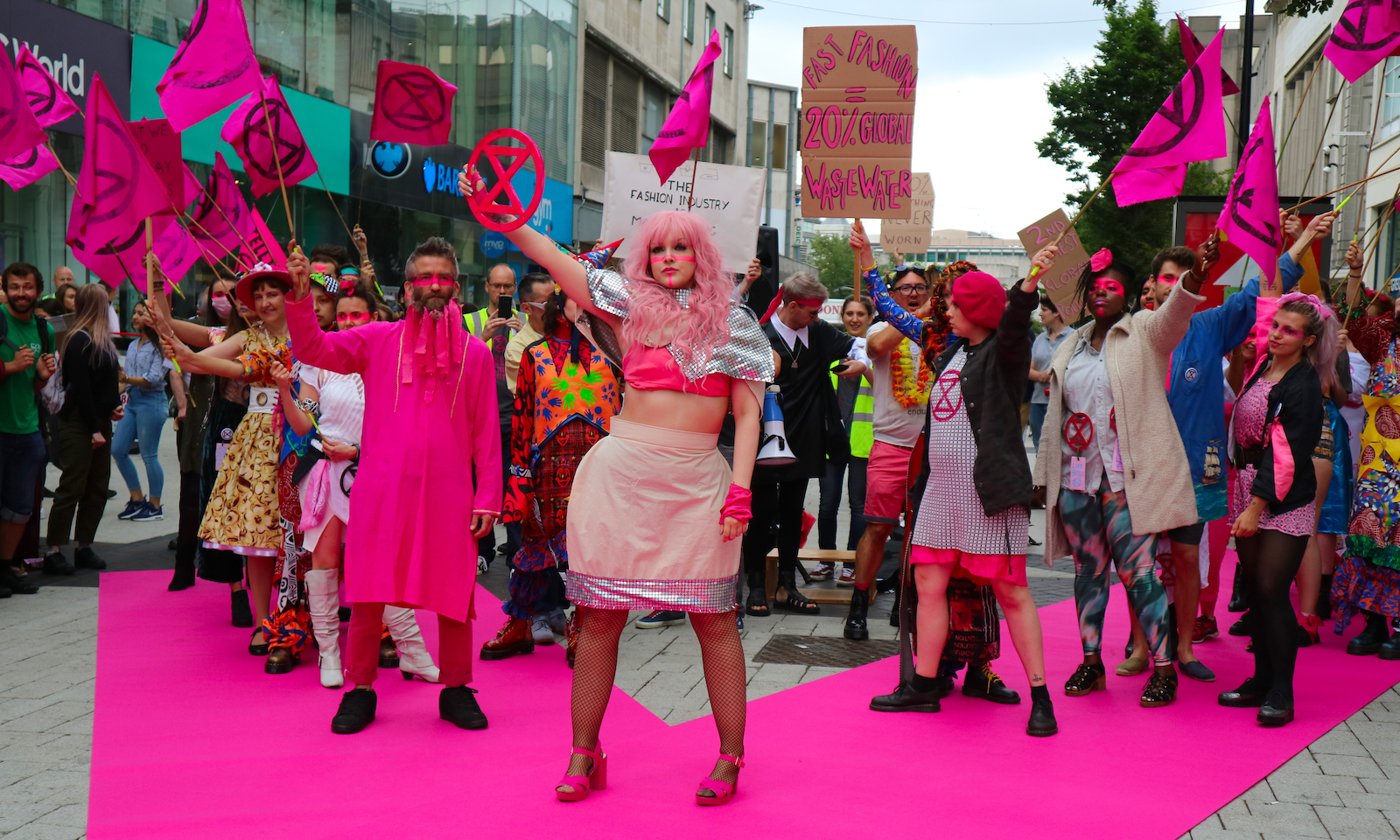
People need to change their clothes buying habits to reverse the fashion industry’s environmental impact, according to an international study involving UNSW Sydney released today.
The environmental price of fast fashion published in Nature Reviews Earth and Environment says the fashion industry is one of the most polluting industries, with the textile dyeing and finishing industry the biggest polluter of clean water after agriculture.
The study urges fundamental changes to the fashion business model to improve the long-term sustainability of the fashion supply chain.
This includes an urgent transition away from ‘fast fashion’, Associate Professor Alison Gwilt, a fashion and textile design researcher from UNSW Art & Design, says.
“Fast fashion is an issue because these items are often worn for a short period of time,” she says.
“They are viewed by the consumer as disposable garments, since they are cheaper to produce and often made from poor-quality material. Normally they are designed to be on-trend, which means that new products are constantly arriving in store all the time.”
The academics from Finland, Sweden, USA, the UK and UNSW identified the environmental impacts of the fashion supply chain, from production to consumption, focusing on water use, chemical pollution, CO2 emissions and textile waste.
The textile and fashion industry has a long supply chain, starting from agriculture and petrochemical production (fibre production) to manufacturing, logistics and retail. Each production step has an environmental impact due to water, material, chemical and energy use.
The authors found the industry produces over 92 million tonnes of waste and consumes 79 trillion litres of water per year, with developing countries often bearing the burden for developed countries.
For example, in terms of the water-scarcity impacts associated with the lifecycle of a 250g t-shirt, 88% of its total water footprint is used in cotton-growing regions to cultivate the raw fibre.
This is in stark contrast to the marginal amount used for laundering the t-shirt in Europe where water is in abundance, although 52% of CO2 emissions are produced during this phase.

Cleaner technologies and new sustainable practices urged
The authors say these sorts of impacts highlight the need for substantial changes in the fashion industry.
This includes the textile industry investing in cleaner technologies and the fashion industry developing new sustainable practices and business models.
They also argue that policymakers need to modify legislation so that waste is managed and recycled through state, territory and government programs that are supported by extended producer responsibility schemes to ensure that all clothing items are collected and put back into the system to close the material loop.
“As we look to deceleration in fashion manufacturing it means that brands and retailers need to look at other avenues and opportunities for growth,” A/Prof. Gwilt says.
“Currently there is a real interest in the fashion rental and subscription service. For example, Rent the Runway, the US clothing rental service, has grown exponentially. While repair and remanufacturing services enable consumers to keep their garments for longer. The Swedish-based brand, Nudie Jeans, retails here in Australia and has been offering its customers a repair and reuse service for some time.”
Innovative new materials to replace resource-intensive and petroleum-based fibres
While impacts from the production of cotton and polyester continue to create concern, there has been a global response to developing new innovative fibres and fabrics that aim to replace resource-intensive natural fibres, and petroleum-based man-made fibres.
Very recently new fibres and materials have emerged from easy-to-grow crops such as hemp, and waste by-products from crops (bio-based fibres) such as pineapple (Piñatex), citrus fruits (Orange Fiber), milk (Qmilk), mushrooms (Mylo) and kelp extracted from seaweed (Algikit).
While most environmental impacts occur in the textile-manufacturing and garment-manufacturing countries, the authors write that textile waste is found globally.
Current fashion-consumption practices result in large amounts of textile waste, most of which is incinerated, landfilled or exported to developing countries.
“When a garment is sold on the shop floor, quite often producers feel that that’s the end of their relationship with the product,” A/Prof. Gwilt says.
“But there is a discussion about whether producers should actually be responsible for the waste that they produce, and how they can they better support the extended life of garments through repair services, for example.”
The authors argue that there needs to be a new system-wide understanding of how to transition towards a more sustainable model, requiring creativity and collaboration between designers and manufacturers, stakeholders, and consumers.
But despite rising awareness of the environmental impacts, the industry continues to grow.
Fashion brands are now producing almost twice the amount of clothing today compared with before the year 2000.
Consumers encouraged to add their voices
A/Prof. Gwilt says the fashion industry has been slow to act on its environmental impact.
“For those of us who've been working in fashion and textiles sustainability, this is a discussion we've been having for a very long time. It's only really been since 2018, that many brands and retailers have actually started to globally identify and respond to some of the issues in the sector.”
She says consumers forget they have a powerful voice which can have a very big impact on what happens with a brand.
“Consumers do have choices and they tend to forget that. There are particular brands that aren't necessarily good in terms of considering the environment, or in being proactively environmentally conscious she says. “Consumers can choose not to shop in those stores.”
A/Prof. Gwilt says people need to keep their clothes in use for as long as possible.
“Consumers need to be really mindful about what they do with a garment when they decide they no longer want to keep it. It’s important to remember that there is always a second, a third and a fourth life for a garment.”
A/Prof Gwilt is the author of Global Perspectives on Sustainable Fashion and A Practical Guide to Sustainable Fashion (2nd edition published in July).
Please see Nature Reviews Earth & Environment for a full copy of the review.
